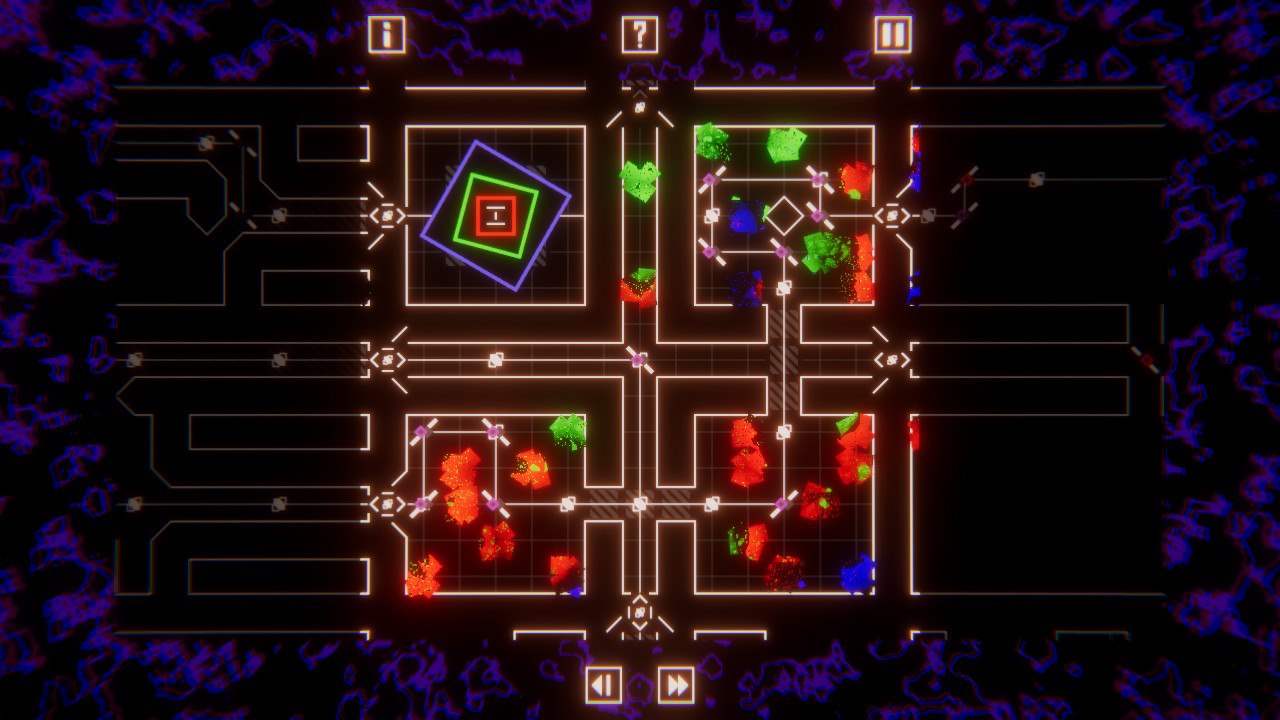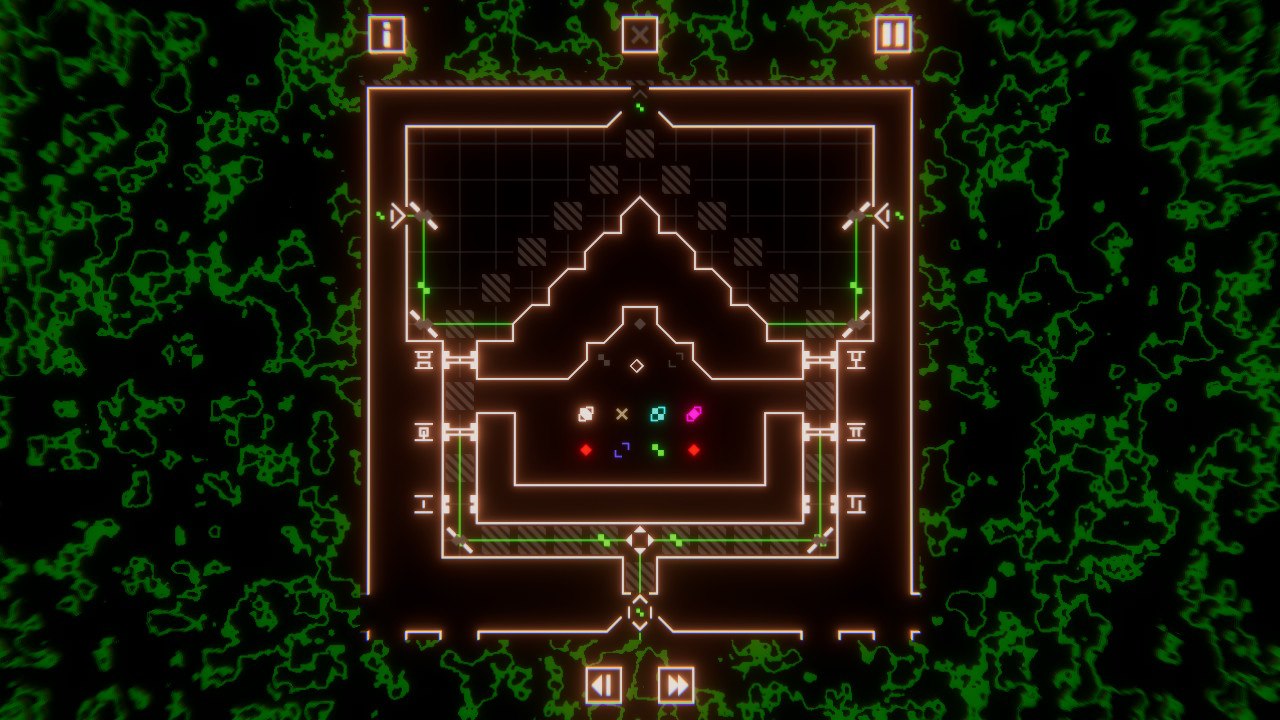
SOLAS 128
This neat puzzler, described as a ‘beam deflection game’, sees you tinker with mirrors and various light sources in order to move from room to room. It builds upon this pretty simple premise in really interesting ways across a series of interconnected spaces.
A typical room (or screen if you will) will see a light source come from one side, and your goal is usually to get it to the other, avoiding any obstacles. This is all done by careful placement of mirrors. Once done, you can progress to the next adjacent puzzle.

This represents the standard gameplay on offer here — but that’s not to say it stays this simple, as this core experience is built upon at a solid, enjoyable pace, with the introduction of new beam colours and new mirror types, mixing things up as you progress.
As an example, a new beam colour may mean that you now have to get a red ray of light across the play area, but if this hits another coloured beam say, they may mix, causing you some trouble. These sorts of situations are common throughout SOLAS 128, and plenty of experimentation is required to progress. You’ll find yourself tinkering with the placement of mirrors to get the light where you want it to go to unlock the next room.
An important aside — although paying attention to colour plays a significant role in the game, it’s actually not a necessity to progress. In a nice accessibility move, each coloured line also has a unique glyph travelling along it, meaning those with vision issues, such as colour blindness, won’t be left out. These glyphs move along the various lines to the beat of the synth soundtrack, another nice touch, that although doesn’t quite move this into rhythm game territory, is a nice touch all the same, making the experience feel all the more cohesive.

Another thing this puzzler does to ramp things up is introduce multi-room puzzles, where your actions in the previous room will impact your play in the next. I found this to be a neat way to amp things up, requiring you to keep a checklist of sorts in your head as to how things are interconnected. Of course, the addition of such multi-room puzzles means the challenge amps up too…
So, if you do hit a roadblock and can’t quite figure out where you need to place your mirrors, the game does have a hint system. This helping hand indicates where you should place the next couple of mirrors. During my time with SOLAS 128 I used it a fair few times, and often wished it gave me more than just two hints per room. I found this hint system a bit lacking, especially when I got stumped on a few particularly tricky late-game puzzles. However, your milage/patience may vary here, and I will add that putting the game down and returning to it later with fresh eyes often did the trick.

It controls well on Switch and is generally fine for the core gameplay, but I did find things to be a bit fiddly when it comes to navigating from room to room or moving around the menus — it really does feel designed with a PC user in mind. Everything seems a little small on-screen too.
SOLAS 128 is a simple enough premise, but it's how it's put together that elevates it. The entire experience is one interconnected space — so although you’re solving one room at a time, the sense of progression towards the bigger picture is a rewarding one to work towards. It’s a real Pandora’s Box of a puzzler, and with 150 puzzle screens to complete, should take a good while.

It's got a real paired-back ‘black box’ look that is pierced by the neon lines which you manipulate. It’s like peering claustrophobically into an old computer or circuit board.
If you’re a big puzzle fan, then SOLAS 128 does a great job of building upon its core mechanic successfully. The general look and feel may not be to everyone's tastes here, and the controls aren’t ideal, but putting that aside, there’s a satisfying puzzler here that will take a good while to chew through.
